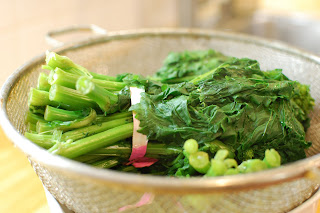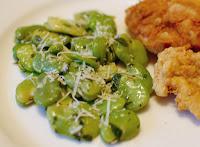For many families, Labor Day weekend is the last chance to get away for a visit to the beach; a last opportunity to enjoy the salty sea air and surf. But, few people realize the importance of salt and water to their everyday lives.
Water and salt are essential for maintaining extra cellular and intracellular cell growth in all plant and animal life. Cells may endure periods of lack of food, but without salt and water, the cells would perish from dehydration. Sodium chloride maintains the electrolyte balance within and around our cells. The human body contains approximately 6 ounces of salt to maintain the correct the balance of water in cells and tissues. Salt comprises about 1% of a human’s blood volume which is also the concentration used in saline solutions to clean wounds. The body’s nerves and muscles need salt for proper functioning.
 |
| Active Salt Mine, Cardona, Spain |
Since our bodies cannot manufacture salt, we must consume it daily because it is quickly eliminated by the kidneys. Salt is so important to human survival that our tongues are sensitive to its taste. While salt enhances the flavor of our food, it triggers the production of saliva and gastric juices required for food digestion.
Salt (most commonly the chemical compound of sodium chloride.) Salt naturally occurs in many parts of the world as a mineral or is mixed in bodies of water. All culinary salts are produced by evaporation. Table salt is made by driving water into a salt deposit (like a mine). This process forms a brine which is then evaporated leaving dried cubical crystals similar to granulated sugar. Kosher salt is made in a similar fashion except that the brine is raked continually during the evaporation process. The resulting product has a light and flaky texture. Sea salt is evaporated from sea water. Even though sea salt has trace amounts of minerals not found in mined salt, all salts are nutritionally the same.
Sodium chloride has been important in the history of just about every culture since Adam and Eve. The Bible mentions it at least 30 times. Salt is still an important compound in all parts of the world. From preservation, to seasoning salt is used in most things we use today.
Evidence of salt usage goes back more than 8,000 years ago. While Neolithic tribes strategically settled near salt springs, it is believed that the Assyrians were the first to truly harvest it. In China, a major portion of writing in the Peng-Tzao-Kan-Mu, the earliest known document on pharmacology, was devoted to more than 40 uses of salt. It also had descriptions on extracting and putting it into usable forms that are similar to the way we process it today.
Salt was equally important to the Egyptians who used salt for mummification and preservation of food. In Europe it is well documented that salt was of great importance to the economy. Markets in Greece involved the exchange of salt for slaves which gave rise to the expression, "not worth his weight in salt."
In the Roman times, salt symbolized spiritual health, because it was a major ingredient in many medications including use as a coagulating agent. Special salt rations given to the Roman legion were known as "salarium argentum," or "salary." In the Roman Coliseum, salt was put in the floor so that when the gladiators would fall to the ground it would “encourage” them to get back up.
It was recorded that thousands of Napoleon’s troops died in his retreat from Moscow because their wounds would not heal because they lacked sufficient salt for good health and convalescence.
American colonists refused to pay inflated prices and taxes for tea and salt from Great Britain which resulted in them being tossed in the Boston Harbor. Some historians believe that salt was the true cause of the protest, but that “The Boston Tea Party” just sounded better.
Not only do our bodies need salt, but salt has many amazing uses. In cooking it seasons, cures, preserves, and whip cream faster. It is also used for getting more heat out of boiled water so you can boil things like pasta and vegetables more easily. In medicine it cleans, treating sprains, sore throats, earaches and acts as an antiseptic. It also can glaze the outside of pottery, remove rust, seal cracks, remove spots on clothes, put out grease fires, melt ice, and kills poison ivy. It is claimed that there are 14,000 different ways for salt to be used.
 Salt comes in many different types and colors including Alaea (red salt enriched with iron oxide from Alaea clay), Hiwa Kai (black, solar-evaporated Pacific sea salt with activated charcoal), and Bolivian Rose (pink, highly-mineralized salt from volcanic deposits of the Andes Mountain range in Bolivia). Also, because salt is derived from an evaporation process, it is very easy to infuse with a variety of flavors.
Salt comes in many different types and colors including Alaea (red salt enriched with iron oxide from Alaea clay), Hiwa Kai (black, solar-evaporated Pacific sea salt with activated charcoal), and Bolivian Rose (pink, highly-mineralized salt from volcanic deposits of the Andes Mountain range in Bolivia). Also, because salt is derived from an evaporation process, it is very easy to infuse with a variety of flavors.
On our recent trip to Amelia Island, I had the distinct pleasure of touring the kitchens of the Ritz- Carlton on Amelia Island including Salt, an entire restaurant devoted to seasonal menus (created by Chef de Cuisine Rick Laughlin) that showcase brilliantly-flavorful foods paired with a variety of salts. They have also perfected the art of infusing salts and have a wide-variety of infused salts. A last stop in the Salt Gift shop provided the opportunity to taste their amazing salinized creations that are truly wonderful enhancements to any dish, as well as Chef Shelton’s luscious handmade salted caramels. 
Crisp roasted potatoes are the perfect vehicle for adding flavorful salt just before serving. These delicious potatoes are a faultless accompaniment to almost any roasted meat. Salt draws the moisture from potatoes, so they should not be salted before cooking as it will prevent the potatoes from developing a nice crispy crust. Try this recipe with fleur de sel, smoked sea salt, or any finishing salt you like.
4-6 large potatoes (we use Idaho), peeled and cut into chunks
2 tablespoons olive oil
½ cup of Kalamata olives, pitted and sliced lengthwise (optional, but SO good!)
Finishing salt, to taste (We used Mediterranean black garlic)
Preheat oven to 350°F (convection preferred). In a large roasting pan, toss potatoes with olive oil and then spread out in a single layer. Roast potatoes, stirring every 15 minutes or so, until potatoes are crispy, browned and tender. This usually takes about 1 hour to 1 ½ hours. If you are adding olives, add them to the roasting pan and toss with potatoes about 15-25 minutes before potatoes are done. Transfer potatoes to a serving dish, sprinkle with finishing salt (and pepper) and serve.
And what better meal than crispy roasted potatoes with grilled leg of lamb! This is one of our favorite Sunday dinners. Homey, earthy comfort food: a perfect meal for the beginning of the Autumnal season.

5 lb. boneless leg of lamb
Olive oil
Salt and pepper
Finishing salt (we used rosemary-infused)
Carefully trim the lamb removing the layer of tough connective tissue and fat. Be sure to remove all visible fat and silver skin (the thin, grayish membrane). Use a thin utility or carving knife for this job. You may be tempted to skip this step, but poorly trimmed meat can develop a gamey flavor. Allow lamb to come to room temperature. Lamb may be cut into smaller "chunks" to hasten cooking time. It also allows for more crispy outside pieces! Rub lamb leg with olive oil and season with salt and pepper.

Prepare a charcoal grill with hot coals. If using charcoal, light 50 briquettes and let them burn until they are covered with gray ash. Push them into 2 banks on either side of the grate. Place a drip pan between the coals and replace the grill grate. Brush the grill with oil to keep the lamb from sticking. Grill lamb, turning and grilling evenly on both sides until an instant-read thermometer inserted into the meat registers 120 to 125 degrees for warm red center or 140 degrees for medium. This will take 40 minutes to 1 hour, depending on how hot the coals are.
Rainy-day method: Trim the lamb as above, and then set the leg of lamb on a rack in a roasting pan and place in a 325° F oven for 1 1/2 to 2 hours or until the internal temperature reaches 125 degrees for rare.
Remove the roasted lamb to a cutting board and tent with aluminum foil. Allow the meat to rest for 15 minutes before slicing. Before serving, sprinkle with a bit of finishing salt to enhance the delicious flavor of the meat. This allows the meat to relax and the juices to redistribute, ensuring you won't lose the flavor and moisture on your cutting board.
 Add the onion to the skillet and cook over medium heat, stirring frequently, until translucent, 3 to 5 minutes; add the garlic and cook until fragrant, 45 to 60 seconds. Add the vinegar mixture, then remove from the heat. Working quickly, scrape the bottom of the skillet with a wooden spoon to loosen any yummy browned bits. Set aside to cool just slightly.
Add the onion to the skillet and cook over medium heat, stirring frequently, until translucent, 3 to 5 minutes; add the garlic and cook until fragrant, 45 to 60 seconds. Add the vinegar mixture, then remove from the heat. Working quickly, scrape the bottom of the skillet with a wooden spoon to loosen any yummy browned bits. Set aside to cool just slightly.















